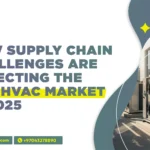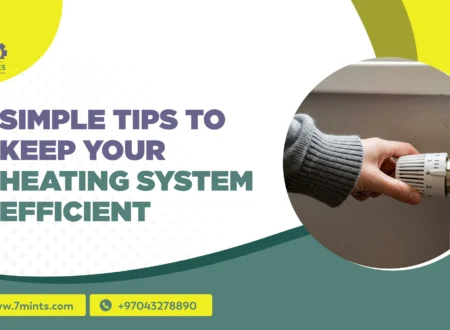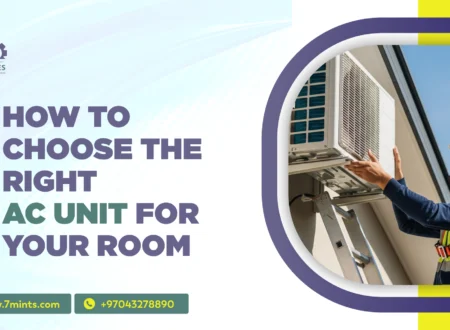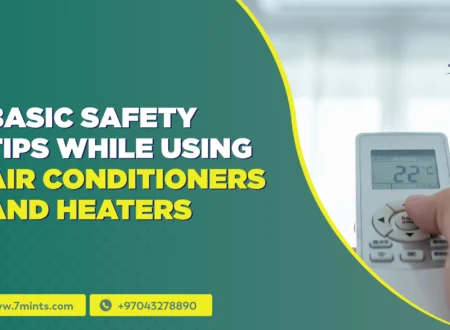The hotter it gets in the UAE with every passing year, the more soaring the demand for air conditioning. While traditional HVAC systems have an efficient method of chilling, they very much drain the energy resources and, thereby, put energy prices and emissions up. Solar-powered HVAC systems now present a smart and sustainable cooling solution for the region. Utilizing the abundant sunlight constituting the UAE atmosphere, the solar-powered systems gave better energy bills, higher energy independence, and a green environment. Let’s delve into how solar energy HVAC is paving the way for cooling in the UAE.
Why Solar-Powered HVAC is Needed in the UAE
The UAE’s unique climate and rapid development serve as a perfect draw for solar cooling solutions.
Extreme Temperatures and High Cooling Demand
The temperature levels in the UAE rank among the highest in the world, with summer days frequently reaching the 50°C mark. These burning hot days induce a very high demand for AC in homes, offices, and public places. Sometimes, cooling alone accounts for 70% of the total energy usage in these months. This reliance on traditional HVAC systems thus taints the national grid with high pressure. Hence, the demand for energy goes from normal to sky-high.
Abundance of Solar Energy Resources
With more than 300 days of sun per year and some of the world’s highest solar irradiance, the UAE is positioned to reap the advantages of solar energy in big measure. Solar panels act as a conduit to tap this free and abundant resource, converting it into electricity to run their HVAC systems. This ensures both a decrease in the use of fossil fuels and provides a steady and predictable source of electric energy for its cooling requirements.
Increasing Energy Costs and Environmental Concerns
As utility rates soar and climate change issues are being raised, there is pressure building up on building owners and developers to provide greener as well as cost-effective solutions. Besides lowering operational costs and carbon emissions, solar-powered HVAC systems are undeniably the perfect option for any eager party who’d like to notionally “future-proof” their property.
How Solar-Powered HVAC Systems Work
Solar-powered HVAC systems work by implementing technologies to turn sunlight into cooling air for comfort.
Photovoltaic (PV) Panels
Solar panels are usually installed on rooftops to absorb sunlight. This energy is then either directly used for air conditioning or stored in batteries for later use when sunlight is missing. Photovoltaic (PV) panels need very little maintenance and have a lifetime of about 25 years, and hence represent a good capital investment for any building.
Integration with Modern HVAC Technologies
Solar HVAC integrates solar energy with advanced HVAC technologies by installing Variable Refrigerant Flow (VRF) systems and energy-efficient heat pumps. These systems work by changing their cooling capacity depending on the actual cooling demand so that they are most energy efficient and comfortable. Further, they cool alongside BMSs using automated techniques to minimize additional energy usage and cost.
Energy Storage Solutions
BESS can store solar energy generated during sunny hours for later consumption and thus provide a cooling effect even after sunset or on cloudy days. Storage is key to maintaining round-the-clock comfort in the UAE, wherein high nighttime temperatures are commonplace.
Main Attributes of Solar HVAC
Solar-powered HVAC: solar energy does indeed bring a lot in the form of benefits for property owners and reproduction of the environment.
Cut Costs on Bills
While the building produces its electricity, it can cut down on using electricity through the grid, especially when rates are at their peak during the period. Depending on the system and climate, solar-powered HVAC can lower electricity consumption in cooling by up to 50%. With time, the savings help pay off the initial investment made in the solar panels and other equipment, with many systems having a payback period of about 1 to 4 years.
Energy Independence and Reliability Improved
With solar generation on-site, buildings become less susceptible to grid outage or fluctuation. Such buffering is essential for the cooling needs of critical facilities, such as hospitals, hotels, and data centers, where cooling is an absolute must. Solar-powered HVAC, therefore, keeps a space cool and safe even during stormy weather or a power outage.
Enhancing Property Value
A property with solar-powered HVAC is a much sought-after investment option for buyers and tenants. The appeal of lower energy bills and environmental benefits to go along with some tax incentives for solar applications can elevate the marketability of these properties. The recent trend among buyers is to seek and feature green attributes, thereby making solar-powered HVAC a forward-looking investment.
Challenges and Considerations
While the advantages are innumerable, certain important aspects warrant consideration before adopting solar-powered HVAC.
Upfront Investment and Payback Period
An initial installation of solar panels and upgrading of HVAC can be very expensive. On the other hand, savings on electricity bills, together with government incentives and tax breaks, almost always render the investment worth it, usually within only a couple of years. One should put forward the upfront costs as a compromise against the potential savings and benefits during the 25 years of the system’s life.
Maintenance and Systems Integration
Generally, solar panels are low-maintenance, but regular cleaning and a few inspections are important for the solar panels to function optimally. Integration of solar-powered HVAC with existing building management systems may require technical skills but is definitely worth it in terms of increased efficiency and comfort.
Awareness and Acceptance
Some owners might find that solar HVAC is something unusual, or it could be the visual concern that inhibits them from embracing this option. An educational awareness campaign with clear and concise detail about benefits, maintenance, and lifespan savings would ease fears and help facilitate wider application of solar HVAC.
Real-World Applications and Success Stories
Solar-powered HVAC is definitely making the difference in the UAE and beyond as more such projects are getting successfully implemented.
Masdar City, Abu Dhabi
Masdar City demonstrates sustainable urban development by installing several solar panels to provide power for the infrastructure, including the technically advanced cooling systems. With solar energy and district cooling, Masdar City has been able to reduce carbon emissions radically while maintaining the comfort of its citizens and workforce. This project potentially influences other cities to implement green technologies.
Hotels and Resorts
The hospitality industry is thus increasingly taking up solar-powered HVACs in order to cut costs and appeal to the environmentally concerned traveler. Lower operating costs, improved green credentials, and marketing as environmentally friendly destinations place hotels and resorts in a win-win situation: increased bottom line and attracting an ever-growing segment of environmentally conscious visitors.
Commercial and Residential Buildings
Developers and property managers are installing solar-powered air-conditioning systems in buildings, both new and existing. These systems provide significant energy savings, thereby allowing them to attain green building status, thus upping the property’s competition in the market. As more success stories continue to pour in, trust in solar-powered HVAC increases.
Government Initiatives & Road Ahead
It is the UAE government that promotes solar-powered HVAC through strong policies and incentives and ambitious sustainability goals.
Green Building Regulations
New buildings in the UAE are due to be constructed under strict energy efficiency codes that require buildings to establish high-performance HVAC systems and renewable energy technologies. These regulations lead to the popularity of solar-powered cooling solutions, also in support of the sustainability targets set by the country.
Incentives and Subsidies
Several government programs offer incentives, such as subsidies and tax breaks, to promote the installation of solar panels. These incentives offset the initial costs and offer a wider section of property owners the possibility of having their own solar-powered HVAC. Check out our latest blog post on How to Improve Indoor Air Quality with HVAC Solutions
Sustainable Vision for Cities
The Dubai Clean Energy Strategy 2050 and Net Zero by 2050 initiatives show that the UAE wants to dominate the landscape of sustainable urban development. Solar-powered HVAC systems are the main linchpin in reducing emissions from, and thus, making resilient and energy-friendly cities.
Conclusion
These systems convert solar energy to lower bills, reduce carbon emissions, and confer value on the property at comfortable levels. As technology evolves with the support of the government, solar-powered HVAC will emerge as the de facto cooling means for the UAE. Ready to make your building cooler, greener, and more cost-efficient? Contact us today to learn how solar-powered HVAC can revolutionize your property and help you save on energy costs!










1 Comment
Comments are closed.